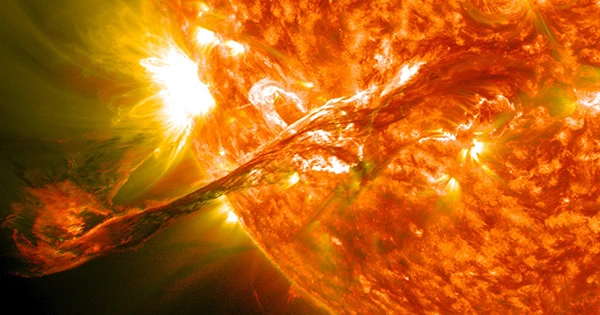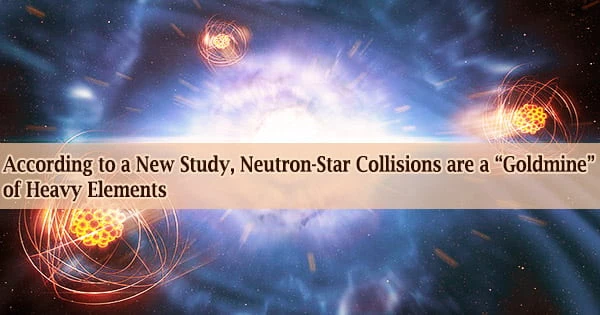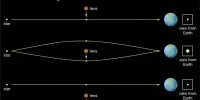Since Monday, sunspot AR2975 has released 17 flares, and it may not be through yet. Some of the charged particles ejected during the process appear to have a good chance of hitting the Earth’s atmosphere, including a “Cannibal Coronal Mass Ejection,” which isn’t as terrifying as it sounds. Observers at high latitudes might expect stunning auroral displays over the next three days if they come our way. Sunspots are colder areas of the Sun created by magnetic fields weakening the mechanisms that allow heat to rise to the surface. Despite the fact that the spots generate less energy than the surrounding areas, they are linked to flares and coronal mass ejections (CMEs), which are plasma blasts into space.
When this happens, charged particles are ejected from the Sun. Those that are heading in our direction may be directed towards the geomagnetic poles by the Earth’s magnetic field. When they collide with the upper atmosphere, auroras might appear, ranging from enticing to spectacular. According to Spaceweather.com, AR2975 has so far produced 11 C-class flares and six M-class flares, as well as numerous A and B flares that are too minor to count. Despite this, an X-class flare, the most powerful type, has yet to be seen.
If the particles are directed away from Earth, flare strength is irrelevant. However, in this case, geomagnetic storms are expected to begin a few hours after midnight UTC tonight. Predictions of such storms are improving as satellites like the Solar Dynamics Observatory provide more data on our nearest star, but they are still far from accurate. Nonetheless, the current forecast is for this cycle to reach G3 status, which, according to the NOAA, can create false alarms on safety equipment, voltage corrections, and intermittent satellite navigation interference.
For several years, we haven’t seen many of these. We should probably grow accustomed to it, too, because a typical solar cycle delivers 200 G3 level storms. Because the second CME is moving faster than the first (1,700 km/s vs. 1,259 km/s), the storm will greater. As a result, the second CME is projected to capture and consume the first, resulting in a “cannibal CME,” resulting in a single large storm rather than two smaller ones.
North Americans should be in prime position to see any auroras that result without having to stay up too late. Europeans may have a better chance of waking up before the sun rises. Auroras could be visible as far as 40 degrees from the geomagnetic poles, which are now positioned in the Arctic Ocean north of Canada and along the Antarctic coast south of Australia, respectively. Those who live near the equator or who don’t have the option to travel away from the city lights will be envious of the sights.
On an 11-year cycle, solar activity occurs. The most recent low occurred in 2019, when the Sun had no sunspots for three-quarters of the time. Since then, activity has increased to the point that there have been no days without a sunspot this year. The peak of activity isn’t projected until 2025, but these cycles are difficult to predict exactly. Several years after the peak, especially during an active cycle, there can be a lot going on. AR2975 is far from the only sunspot on the Sun right now – a slew of others are nearby, as well as numerous others half a hemisphere distant, resulting in a level of activity comparable to the last peak.
















